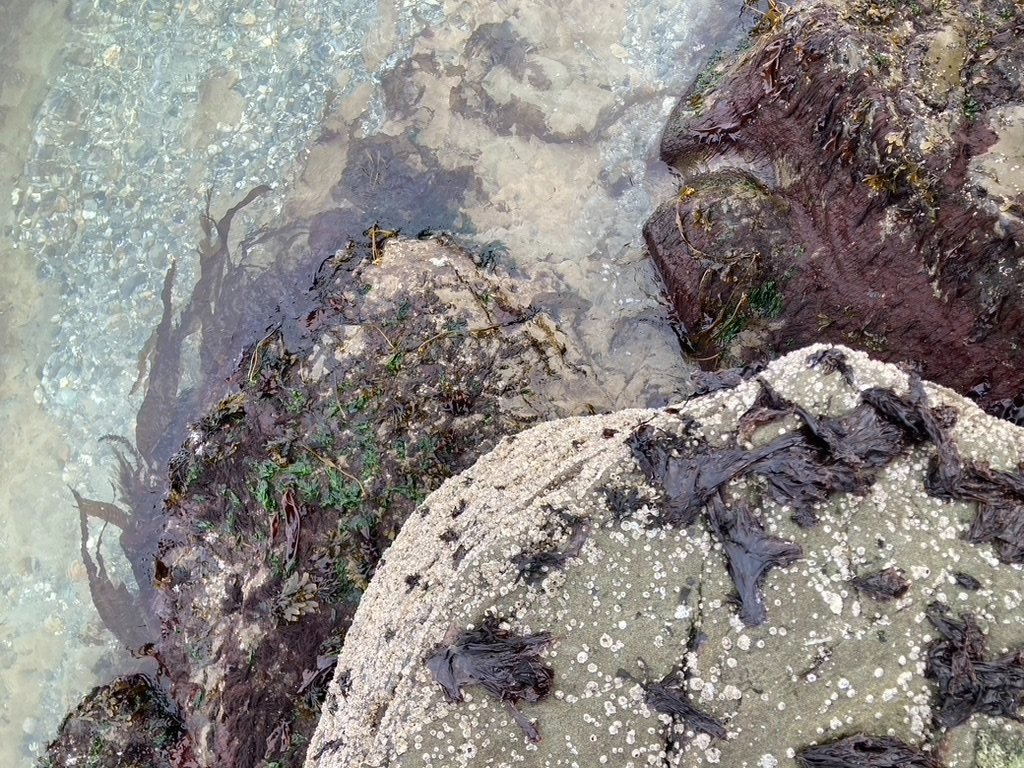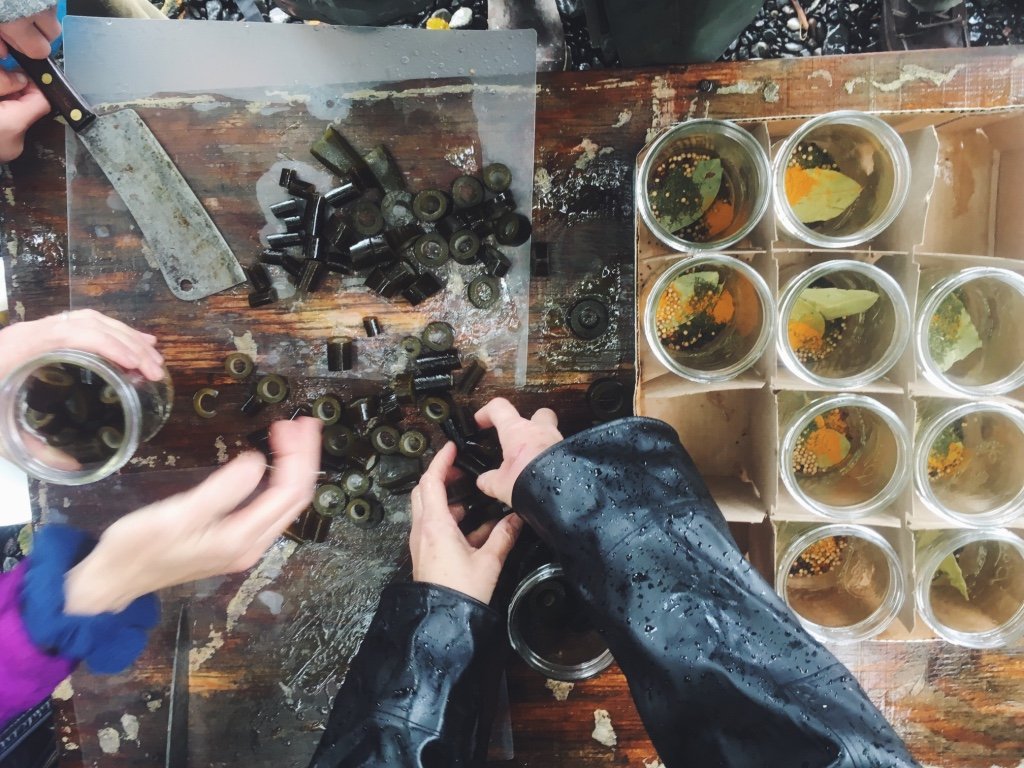
Seaweed
Resources
Kelp Pickles Recipe
-

Learner Limbach 2019
Ingredients (for 12 pint jars)
2 bullwhip kelp whips, cut into small rounds
Note: Harvesting attached stipes (whips) kills bullwhip kelp plants. Only harvest whips if they are already detached and free floating but still have good tissue integrity.
Brine
6 pints water (12 cups)
3 pints vinegar (6 cups)
½ cup saltSpices (per pint jar)
½ tsp mustard seed
½ tsp black pepper corns
¼ tsp whole coriander
¼ tsp red chili flakes (or sub any hot pepper fresh or dried) *for light spice - omit if you don’t like spicy or increase for extra spicy
¼ tsp turmeric and/or curry
¼ tsp dill weed (or sub fresh dill weed and/or dill umbel)
3-4 cloves of fresh garlic (can sub or add fresh garlic scapes)
A few slices fresh onion
2 small-medium sized grape leaf (this prevents the kelp rings from getting mushy over time)
2 bay leaves1. Make brine for pickles
Calculate how much brine you will need for your Kelp Pickle batch. You will need about 9 pints of brine for 12 pints of pickles.
In a cooking pot, combine vinegar and water at two parts water and one part vinegar (6 pints water and 3 pints vinegar will cover a 12 pint case of canning jars.) Use distilled white vinegar and clean water.
Mix in salt to taste. It should taste like a pleasant amount of salt. About 1 cup per two gallons of brine. *Note: Use non-iodized pickling/canning salt. (regular table salt can cause discoloring and cloudiness due to the iodine and other additives)
2. Add Spices (above) to jars (organic if possible)
For this recipe, I have provided measurements as close as I could come up with for a recipe, but the general idea is to not be confined to one recipe, and to experiment to figure out what you like best. I experiment every year to try out different variations. Sometimes I am lacking a spice or I have something new and different available in season.
3. Chop Kelp into rings (3/8 inch) and pack in jars, filling only up to the jar lid threads. Kelp ring thickness needs to be consistent in order to hold chevre well.
4. Bring brine to a rolling boil and keep it boiling while you scoop it into the jars, covering kelp rings.
*Meanwhile, in a small pot of water, sterilize canning lids by boiling for 10 minutes.
*Fill jars quickly! Otherwise the heat will escape and they will not seal
5. Once jars are filled place sterilized lids on jars, set aside and wait for them to seal.
Note: If any jars have not sealed in 2 hours they probably won’t without extra help. Put these unsealed jars in a bath of boiling water for 5-10 minutes and then remove them to get them to seal. They should seal soon after you take them out of the boiling water.
Recommendations for kelp pickle use: on tacos, burgers, salads. Stuffed with chevre (goat cheese) and eaten directly. The brine and spices are also great in rice and beans, potatoes, salad dressings, and more!